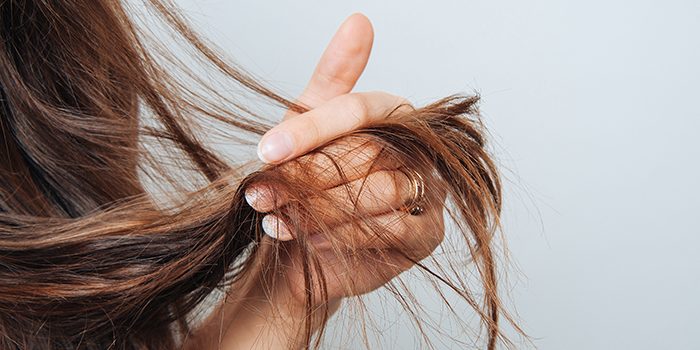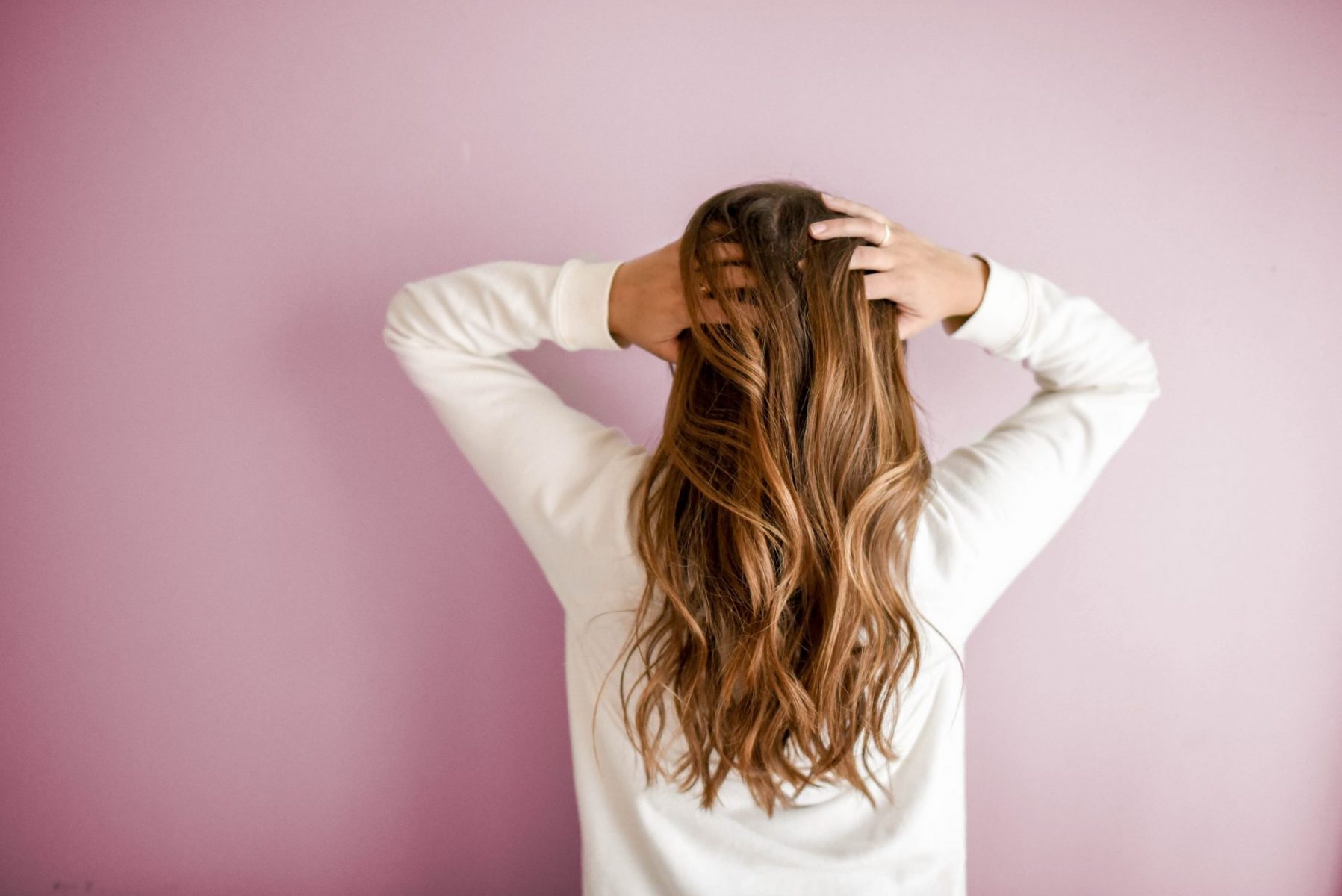Hair that is in good health not only looks good, but it also shows that you are in good health generally. It means hair that is healthy, shiny, and soft, with little damage or hair loss. Hair health is affected by many things, including genes, age, hair type, and the way you live your life. Do what you can to keep your hair healthy and beautiful. That way, you’ll look young and sure of yourself. There are some important things that can hurt your hair, and this article will tell you how to keep it healthy. Whether you have curly, straight, or wavy hair, these guidelines will help you unlock the secrets to healthier, more resilient hair. So let’s delve into the realm of hair health and unravel the secrets to achieving and maintaining beautiful locks.
Benefits of Maintaining Good Quality Hair
Taking care of your hair isn’t just about looking good; it’s also about feeling good about yourself and loving what makes you special. People see who you are in your hair, and taking care of it can do amazing things for your health.
You can get better and stronger hair by taking care of it the right way. Your hair’s natural oils and moisture stay in good shape when you wash, condition, and feed it regularly. This makes it healthier and more vibrant. In turn, this makes hair grow faster and lowers the risk of loss.
There are many perks to taking care of your hair. In the first place, you look a lot better. Great hair that shines and is healthy will make you feel and look your best. Having more trust in yourself can make your personal and work life better, which will make you happier overall.
A good hair care practice can also help protect your hair from damage caused by things like heat styling, strong chemicals, and pollution in the environment. Using the right products and methods for your hair type will help keep the hair strands together and stop them from breaking.
Causes of Poor Quality Hair
Understanding the possible reasons of bad hair quality is important for getting and keeping healthy, beautiful hair. Hair that is dry, broken, and brittle can be caused by a number of things. Overusing heat styling tools like flat irons, curling irons, and blow dryers can weaken the hair shafts and remove the hair’s natural wetness. Harsh chemicals in some hair products can also damage hair because they can damage the layers of the hair and take away the vital oils. Also, things in the surroundings, like smog and UV rays, can make hair look dull and dead. Also, bad nutrition and an uneven diet that is missing vitamins and minerals that your hair needs can affect its general health. To sum up, some hair treatments, like chemical relaxers or too much coloring, can weaken the hair strands and cause them to break. Knowing these reasons can help you make smart decisions and start a hair care routine that feeds and shields your hair for long-lasting health and energy.

Lack of Care
If we don’t take care of our hair properly, it can affect its health and look in big ways. If we don’t take good care of our hair on a regular basis, we can end up with problems like dandruff, dryness, and stiffness.
One of the main effects of not taking care of our hair is that dirt and dust can build up in it. If we don’t wash our hair often, the follicles get plugged up, which causes ingrown hairs and more pollution to build up in the environment. This can then make dryness, stiffness, and burning even worse.
It’s just as bad to use the wrong hair care items. Some shampoos and styling products contain harsh chemicals that may remove the hair’s natural oils, making it more dry, breakable, and likely to fall out. Aside from that, not using the right conditioning treatments can also dry out hair, making it brittle and limp.
To fight these affects and keep your hair healthy, you need to stick to a hair care routine that is made for your hair type and structure. This includes washing your hair regularly with mild shampoos and products made just for your hair type. Deep conditioning treatments and style products that protect hair can also help make it stronger and shiner.
Environmental Factors
Our hair is always being hit by different things in the surroundings that can damage its health and look. Pollution, high temperature, and hard water are some of the most common things that can damage hair shafts and make them dry and frizzy.
It’s easy for air pollution like smoke, dust, and toxins to get into our hair and skin. These particles not only make our hair dirty, but they also block the pores on our head, which stops hair from growing in properly. Besides that, pollution can take away hair’s natural oils, which makes it dry and brittle.
Hair can soak up extra water from the air when it’s humid, especially in hot and warm places. Because of this, the hair’s wetness levels become uneven, which makes it frizzy, dull, and hard to style. Humidity can also make hair look like it has no life in it.
Hard water, which has a lot of minerals in it like calcium and magnesium, can damage our hair in many ways. It leaves behind chemical buildups that cover the hair shaft and make it look limp and dull. Hard water can also make it hard for hair products to get deep into the hair strands, which can make conditioning treatments less effective.
It’s important to change some habits to protect your hair from these outside forces. To begin, you might want to wear a hat or scarf over your hair when you’re outside in polluted air or bad weather. If you wash your hair often with a clarifying shampoo, it can help get rid of any buildup that comes from hard water or pollution. Using conditioners and leave-in treatments that moisturize hair can also help fight the dryness and frizz that heat causes.
You can keep your hair healthy and beautiful by taking steps to protect it from the bad effects of smog, heat, and hard water. For the best results, make sure you use hair care items that are made to deal with these external factors.
Genetics and Age
Genes and age are two of the most important factors that affect the health and beauty of our hair. Our genes determine the type of hair we have, such as straight, curly, wavy, or kinky hair. They also determine the thickness and structure of our hair. Our hair changes as we get older because of changes in hormones and the normal process of aging.
Hair type is one of the main things that genetics can change. Some people are more likely to have thin, fine hair because of their genes, while others are more likely to have thick, coarse hair. The way our hair reacts to style and products is also affected by our genes.
Our hair changes in many ways as we get older. The production of melanin, the pigment that gives hair its color, goes down, which makes hair look gray or white. The hair cells may also get smaller, which makes the hair thinner and less full. During menopause or andropause, changes in hormones can also hurt hair health, making it dry, brittle, and prone to loss.
Damage to hair can be caused by genetics and getting older. One of these is less production of natural oils, which can make hair more likely to get dry and break. Hair strands that are less flexible may also be more likely to get damaged by style tools, strong chemicals, and the environment.
It is important to take a whole-person approach to hair care if you want to keep your hair healthy despite genetics and getting older. This means using products that are right for your hair type, keeping your hair safe from heat and UV damage, eating a healthy diet full of vitamins and minerals, and deep drying your hair regularly as part of your hair care routine.
Stress and Diet
Stress and what you eat are two very important parts of keeping your hair healthy. Managing your stress levels is important because long-term worry can make your hair fall out and become unhealthy.
High amounts of worry can mess up the body’s normal hair growth cycle, making hair fall out more and grow more slowly. The strands may get smaller and weaker because of this. Inflammation in the head can also be caused by stress, which is bad for hair cell health.
Eating a well-balanced diet is also important for hair growth. Keratin is the main building block of hair, and eating protein-rich foods like lean meats, fish, eggs, and vegetables can help your body make more of it. It is necessary for the body to make collagen, which makes hair stronger, and vitamin E helps get more blood to the head.
Using methods for dealing with worry can greatly improve the health of your hair. Regular exercise, awareness or meditation practice, and getting enough sleep are all good ways to deal with stress. A healthy diet with a range of fruits, veggies, whole grains, and healthy fats feeds the skin and hair cells, which helps hair grow in a healthy way.
Styling Hair with Heat or Chemicals
If you style your hair too much with heat or chemicals, you could do a lot of damage that will hurt its health and look. While blow dryers, curling irons, and flat irons are great for styling hair, using them too much can dry it out, break it, and cause split ends.
In the same way, strong chemical treatments like dyeing or perming can make the damage to your hair even worse. These methods may weaken the hair shafts, making them more likely to break. The toxins used in these methods can also dry out your skin and irritate your hair.
To keep your hair from getting damaged by too much styling, you need to know what kind of hair you have and how well it handles heat and chemicals. For example, fine or thin hair may be more fragile and need lower heat settings when curling. In the same way, using strong chemical treatments on hair that is already damaged or weak can make it even less healthy.
Also, it’s important to use safety products, like heat-protectant sprays, before you use heat styling tools. These items can help protect your hair from heat damage by putting a buffer between it and the heat. You can also lessen the damage caused by too much heat by choosing softer ways to style your hair, like letting it air dry or using low heat settings.
Diagnosing Hair Damage
Hair loss is a problem that a lot of people have, and knowing how bad the damage is is important for dealing with and handling it properly. To diagnose hair damage, you have to look at a number of things, such as the general health of the hair, the specific reasons of the damage, and the current state of the hair strands and skin. By correctly identifying hair loss, the right steps can be taken to fix it and keep it healthy.
Examining the Strands Under a Microscope
To correctly identify hair loss, looking at the strands of hair under a microscope can give you useful information about its state. A microscope lets hair professionals get a better look at the hair cells, which helps them find problems that might be causing hair loss.
It is important to pay attention to the skin, cortex, and medulla when looking at the strands. It is the cuticle’s job to protect the hair from damage, which can cause hair to lose nutrients and become dry. The cortex, which is below the surface, makes the hair strong and flexible. If the cortex gets damaged, the hair shaft can break and become weak. The medulla, which is the deepest layer, isn’t always found in all hair types and isn’t a good way to tell if there is damage.
There are two major ways that substances can get into hair fibers: transcellular diffusion and intercellular diffusion. Transcellular diffusion is when substances move through the cuticle cells, and intercellular diffusion is when substances move through the areas between the cuticle cells. Both of these ways can damage the hair’s health and structure.
When you cross-link proteins in the hair shaft, you make new links between them. Bleaching can change the cross-link density, which makes the hair more fragile and easy to damage.
Professionals can see damage to hair by looking at strands under a microscope and finding things like higher cuticles, broken cortex, and less cross-link density. This information helps you figure out the right methods and care routines to get your hair healthy again and keep it that way.
Testing the Elasticity and Porosity of Your Hair
To keep your hair in good shape, you need to know about its unique qualities, like how springy and porous it is. Porosity tells you how easily your hair can take in and hold on to water, while elasticity tells you how much your hair can stretch and bounce back without breaking. By testing these things, you can learn a lot about your hair’s general health.
The first step in a flexibility test is to gently pull on a piece of hair. Watch how far it stretches before it goes back to its previous shape. Hair that is healthy should be able to stretch without breaking and then spring back to its original shape. If your hair is stiff and breaks easily, it could mean that it is damaged or not getting enough moisture.
Porosity, on the other hand, tells you how well your hair takes in and holds water. Put a hair strand in a glass of water to test its porosity. Watch how fast it goes down. If it sinks right away, it means your hair has a lot of pores, which means it takes in water quickly but might have trouble holding on to it. It means your hair has low porosity, which means it has trouble absorbing water if it floats for a while.
You can make your hair care routine more effective if you know how springy and porous your hair is. If your hair isn’t flexible enough, you might want to use deep conditioners or protein treatments to make it stronger and more flexible. People with high-porosity hair should use moisturizing products to help keep the moisture in. People with low-porosity hair may benefit from using heat during treatments to help open the cuticles and let the moisture absorb better.
By checking your hair’s flexibility and porosity on a daily basis, you can tell how good it is and fix any problems to keep your locks healthy and full of life.
Solutions to Improve Your Hair Quality
To keep your hair in good shape, you need to know about its unique qualities, like how springy and porous it is. Porosity tells you how easily your hair can take in and hold on to water, while elasticity tells you how much your hair can stretch and bounce back without breaking. By testing these things, you can learn a lot about your hair’s general health. Now that you know these things, you can use the right methods to make your hair better.
Regular Trims and Protective Styles
Trims and protective styles done on a regular basis are very important for keeping your hair healthy and in good shape. Even though these things may seem easy, they can make a big difference in keeping your hair from breaking, splitting, and getting other damage.
Getting haircuts is an important part of keeping your hair healthy and stopping loss. Getting your hair cut every six to eight weeks gets rid of split ends and weakened hair, which helps your hair grow stronger and healthier. Cutting hair short also stops split ends from moving up the hair shaft, which means you won’t have to make as many drastic cuts in the future. By keeping your hair strands together, you can keep them from breaking and keep your locks looking beautiful.
Other than getting your hair trimmed regularly, using protective styles can help protect it from the damage that styling tools and the environment can cause. Styles that protect your hair, like bands, updos, and buns, keep it from getting too hot from flat irons and curling irons. These styles also protect your hair from things like wind, smog, and direct sunlight, which can dry out and break your hair.
When you use protected styles, it’s important not to pull on your hair too much or leave them in for too long. To give your hair a break, it’s best to switch between different protective styles. Styles that protect hair include braids, twists, buns, and updos.
By making regular trims a priority and styling your hair in safe ways, you can keep it healthy, stop it from breaking, and make split ends look less noticeable. To keep your hair healthy, remember to take care of it and keep it in good shape.
Avoiding Hot Water and Too Much Sun Exposure
It takes more than regular cuts and protected styles to keep hair in good shape. It also means staying out of hot water and the sun as much as possible. Neither of these things is good for your hair’s health or cosmetic look.
Even though hot water may make you feel calm, it can damage and dry out your hair by removing its natural oils. It is best to wash your hair with cold water to keep it healthy. The natural wetness in your hair is kept in by lukewarm water. This also keeps the cuticles from opening up too much, which can cause frizz and damage.
Along with hot water, being in the sun for a long time can also damage your hair. Your hair can get dry, lose its color, and be damaged in general by the sun’s UV rays. When you’re going to be outside for a long time, wear a hat or use a hair spray with sun protection to keep your hair from getting damaged.
You can help keep your hair in good shape by staying away from hot water and too much sun. Don’t forget to wash your hair with cold water and keep it out of the sun. Taking these easy steps will help your hair stay healthy, bright, and full of life.
Using Natural Products on Your Scalp
For healthy hair, it’s important to use natural items on your skin. It’s important to feed and protect the head with natural, soft products because it’s where healthy hair grows.
To keep natural goods free of strong chemicals and man-made ingredients that can dry out the hair and hurt the skin, people use them. If you use natural products, you can keep your scalp from getting dry, itchy, and sensitive, which can damage your hair and cause you to lose it.
Picking natural goods for your skin should have a mix of ingredients that keep it fresh and those that are high in protein. Honey, aloe vera, and glycerin are all moisturizing ingredients that help keep the scalp from getting dry. Another thing they do is help keep the scalp’s natural wetness balance, which is important for hair growth.
Protein-based ingredients, like amino acids and hydrolyzed protein, help to keep hair from breaking by making the strands stronger. They help fix any damage that is already there and give hair the building blocks it needs to grow in a healthy way.
You can give your skin the nutrition and care it needs by using natural products that contain protein- and moisture-rich ingredients. This will help your hair cells stay healthy and make your hair strands stronger, smoother, and more durable.
Remember that healthy hair starts on the head, so pick natural items that will feed and protect it. Adding protein- and moisture-rich products to your hair care routine will help your hair stay strong and healthy.
Conclusion
To sum up, using natural items that don’t contain strong chemicals or man-made ingredients is important for keeping hair in good shape. Using natural products can help keep your scalp from getting dry and irritated, which can damage your hair and cause you to lose it. It is important that the products you use have a good mix of ingredients that moisturize and ingredients that are high in protein.









